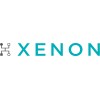
Seizure Prophylaxis in Aneurysm Repair
Intracranial AneurysmsSeizureAfter a thorough review of the existing literature as well as a review of our own practice, the investigators have concluded that the decision to treat patients undergoing aneurysm repair with levetiracetam has reached true clinical equipoise. In other words, the investigators cannot favor a decision to either administer or not administer this drug in these patients based on the existing information. The utility of anti-epileptic prophlaxis in the perioperative period for patients undergoing intracranial aneurysm repair remains a common practice that is not supported by the current literature that includes retrospective analyses as well as prospective trials for similar but not identical types of patients. The investigators propose to settle this dilemma by performing a prospective randomized trial in patients undergoing aneurysm repair in order to definitively determine if the common practice of perioperative antiepileptic drug administration has any utility. The study will be extended to June 2024 to allow for a 5 year follow up of the last enrolled patient in June, 2019.

Study of Perampanel as Adjunctive Treatment for Inadequately Controlled Seizures Associated With...
Lennox-Gastaut Syndrome (LGS)This study is being conducted to demonstrate that perampanel given as adjunctive anti-epileptic treatment is superior to placebo in reducing the number of drop seizures in participants with inadequately controlled seizures associated with Lennox-Gastaut Syndrome (LGS).

Optimisation of Hybrid Fittings for Cochlear Implant Recipients
Hearing LossWhen providing amplification post-implantation to residual acoustic hearing in the implanted ear, the lower frequency boundary can be modified to minimize or avoid overlap between the frequencies coded through acoustic hearing and those presented through electrical stimulation. This boundary is termed the cross-over frequency (Fc) and the effect of modifying this parameter will be investigated in this study. To avoid the research being confounded by prior bias for a particular frequency allocation, the study will be conducted with newly implanted recipients. This study will also investigate whether tests which measure the ability to use low frequency hearing and objective measures can predict the preferred Fc and speech performance benefit.

Efficacy and Safety of Intravenous Phenobarbital in Neonatal Seizures
EpilepsyBenign NeonatalThis is a randomized, double-blind, parallel-group, Phase 3 study to evaluate the efficacy of the administration of phenobarbital sodium injection in neonates who have suffered from electrographic or electroclinical seizure. As neonatal seizures can have long-term adverse effects, including death, placebo-controlled studies are not appropriate for this population. This study is designed to show intravenous phenobarbital is effective at preventing subsequent seizures by demonstrating greater efficacy at a higher dose compared to a lower dose.

Carbon Dioxide (Carbogen) for the Treatment of Febrile Seizures
Febrile SeizureThe aim of this clinical trail is to evaluate the efficacy of a Carbogen inhalation in patients with febrile seizures compared to a placebo-inhalation. Further aims are the evaluation of the safety of the Carbogen inhalation via a low-pressure can with a breathing mask in a home-setting, the manageability of the Carbogen inhalation via a low pressure can with a breathing mask in a home-setting or on the way (mobility), the quality of life of the parents and children using the low pressure can with a breathing mask in a home-setting or on the way (mobility) and the contentment and anxiety of the parents.

A Double-blind, Randomized Conversion to Monotherapy Study to Evaluate the Efficacy and Safety of...
EpilepsyAntiepileptic drugs (AEDs) are the main treatment for epilepsy; however, only a limited number of AEDs are approved for use as monotherapy. The objective of this study is to evaluate the efficacy of Brivaracetam (BRV) in the conversion of partial onset seizure patients from combination treatment to monotherapy

Open-Label Extension Study of Rufinamide Given as Adjunctive Therapy in Patients With Refractory...
Refractory Partial Onset SeizuresThis was an open-label extension study in adolescent and adult (between 12 and 80 years old) participants who had completed their participation in Study E2080-A001-301. The main objective of this study was to evaluate the safety and efficacy of long-term administration of rufinamide for the control of epileptic seizures in participants who had refractory partial seizures despite treatment with a maximum of three approved antiepileptic drugs (AEDs).

Randomized Trial Comparing 3 Routes of Delivering Lorazepam to Children.
Status EpilepticusConvulsionsThis study aims to address the hypothesis that Lorazepam (an anticonvulsant) is as effective when given via the intranasal or buccal route as the intravenous route in terminating convulsions in children.

A Study of the Safety and Efficacy of Depakote Sprinkle Capsules in the Treatment of Partial Seizures...
Partial Seizure DisorderThe purpose of this study is to compare the safety and efficacy of two concentration ranges of valproate using Depakote Sprinkle Capsules as adjunctive therapy in the treatment of partial seizures, with or without secondary generalization, in children 3-10 years.

XEN496 (Ezogabine) in Children With KCNQ2 Developmental and Epileptic Encephalopathy
EpilepsyEpilepsy in Children6 moreTo investigate the potential antiseizure effects of adjunctive XEN496 (ezogabine) compared with placebo in children with KCNQ2 Developmental and Epileptic Encephalopathy (KCNQ2-DEE).
